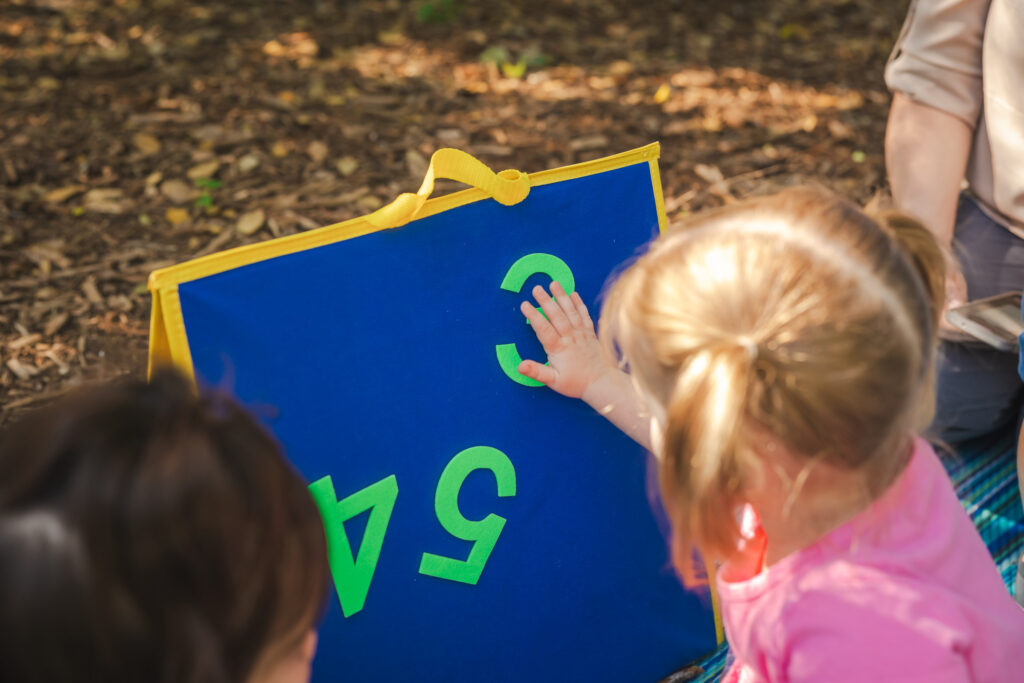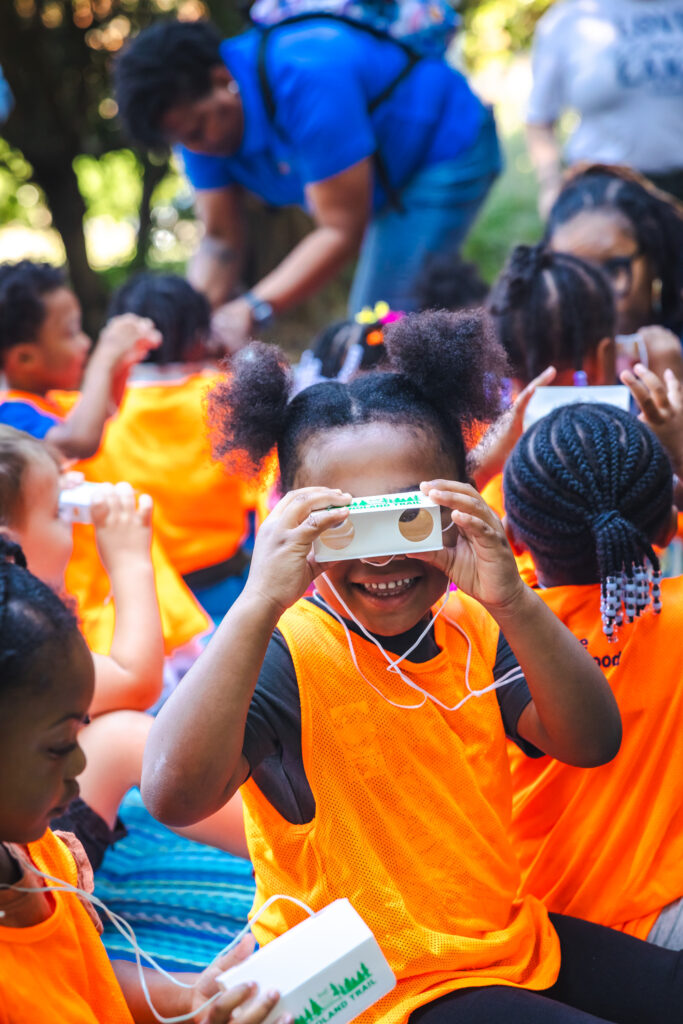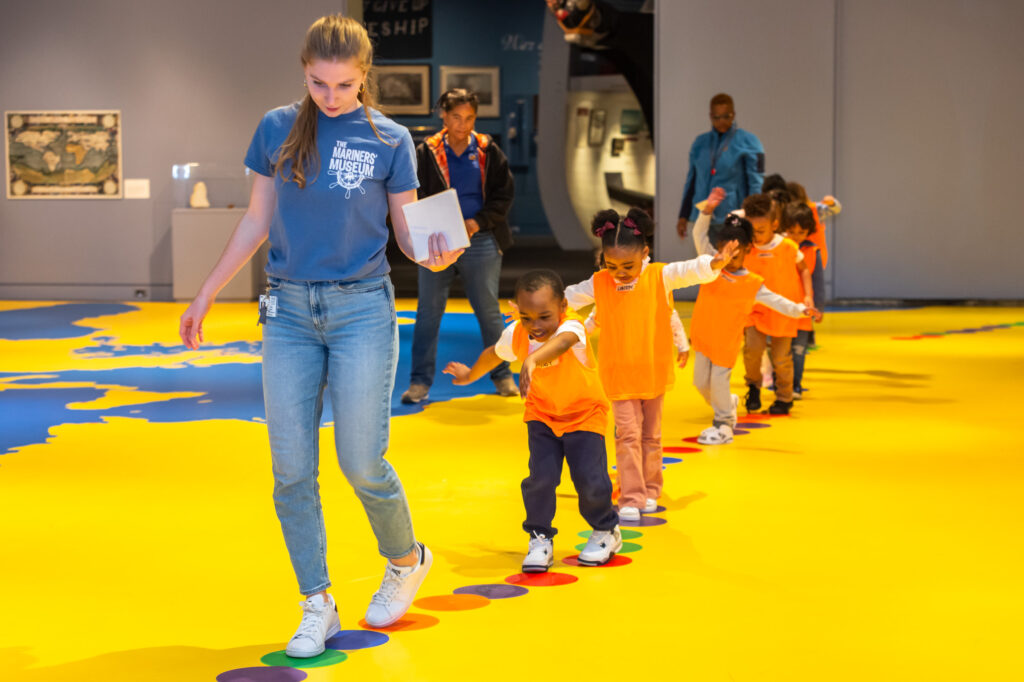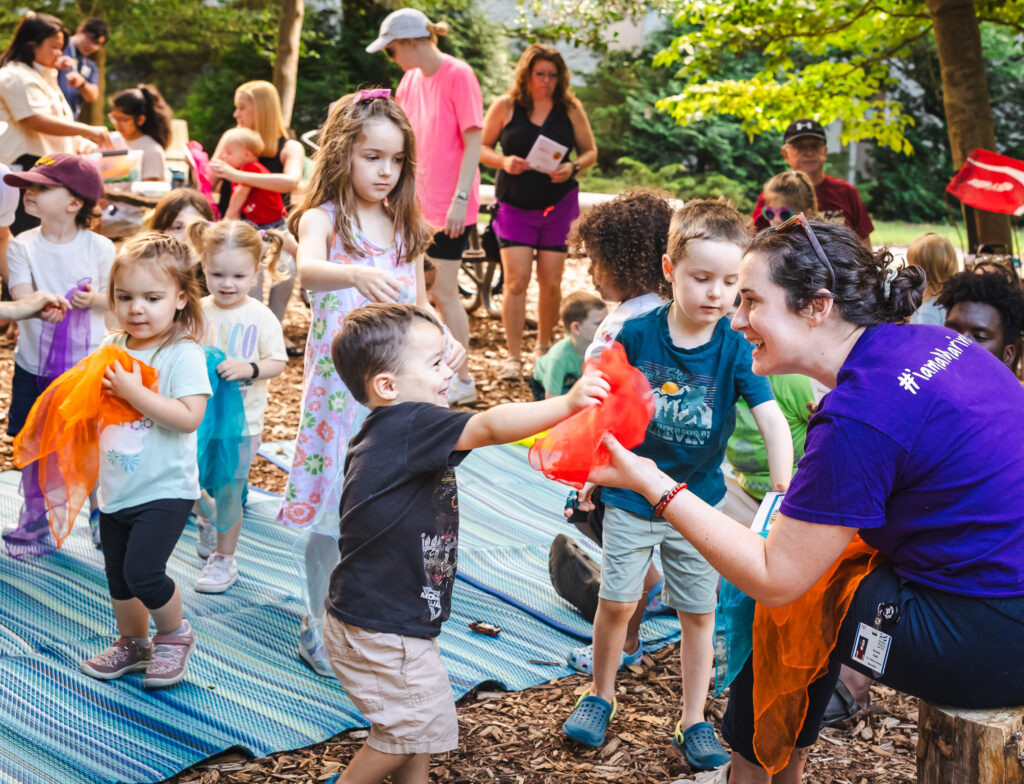
One of the most repeated tenets around The Mariners’ is, “The school-aged child is the most important segment of our community.” This concept is core to our mission, and we’ve sought out many opportunities over the past several years to increase the number of students in our galleries. So when we learned there was a demand for more interactive learning experiences for local PreK students, we gladly dove in to help meet that need. In the fall of 2023, we added a new position to our team to lead program initiatives geared toward our youngest mariners: Early Childhood Educator.
Amanda Abrill stepped into the role and hit the ground running, leveraging her eight years of public school experience to inform our Early Childhood Education (ECE) strategy and launching new enrichment programs that have brought scores of PreK students onto The Mariners’ campus. Here’s an overview of how our ECE efforts are going and what we’ve learned so far from our intentional investment in early childhood programming.
Why Early Childhood?
According to data compiled by the Virginia Kindergarten Readiness Program, 40 percent of students entering kindergarten in Virginia are below benchmark standards in both reading and math. That means almost half of Virginia kindergartners begin grade school lacking the crucial academic skills they need to succeed. The Mariners’ is partnering with educators to help supplement in-class learning by designing programs specifically for Pre-K students.
Our goal is to provide our community’s Early Childhood Centers with free and meaningful enrichment experiences that are also engaging. We developed four new EEPs (Educational Enrichment Programs) that align with both the Virginia Department of Education’s Early Learning and Development Standards (ELDS) and the STREAMin3 curriculum, which combines interactive academic and social-emotional learning for children from birth to five years.

The Mariners’ had over 500 student engagements across seven ECE centers in 2024. Some of the programs occurred in person, and some were off-site.
Our 2024 early childhood programs included:
- Math at the Museum (in-house)
- Wild About Pollinators (in-house)
- What Floats Your Boat? (outreach)
- Our Five Senses (in-house)
These programs target PreK learning standards and are designed specifically for the classes that are visiting. 100 percent of students receive these valuable experiences at no cost.
Learning and Pivoting
In 2024, we learned a great deal about what works and what doesn’t, and we’re taking that information to heart as we strategize how to build on our early childhood accomplishments:
Transportation
Many ECE centers in the community do not have access to transportation. We’ve found that, although many educators are eager to take advantage of The Mariners’ ECE programs, these centers often don’t have vehicles or drivers that can get them to the Museum and back. Our two outreach programs, “What Floats Your Boat?” and “Our Five Senses” were developed with these centers in mind.
Age-based Learning
While it may not seem like there’s a significant difference between ages 3 and 4, the abilities and challenges between these two ages are vastly different. In an effort to ensure our programming is customized to the corresponding development level of the kids we serve, we’re considering ways to tweak our programs so that they’re slightly different between 3- and 4-year-olds to maximize effectiveness.

Redefining “Field Trip”
Here at The Mariners’, we are redefining what the term “field trip” means. Our approach involves multiple points of engagement over the course of a child’s academic career and provides high-quality enrichment experiences to multiple grade levels. This strategy now includes early childhood, which is often overlooked. An ECE center in our community can now book up to four PreK programs in one school year, giving young students multiple opportunities to feel a part of the Mariners’ community. However, many centers in our area are not yet used to this holistic approach. Our goal in 2025 is to get word out that The Mariners’ early childhood programs are here to stay, and creating meaningful partnerships with our community is our top priority.
Wonder Wednesdays
In the summer of 2024, The Mariners’ introduced Wonder Wednesdays, a free public program for kids ages two to four and their families/caregivers. For 10 weeks, the community flocked to the Bumblebee Learning Garden in Mariners’ Park for songs, games, and storytime centered around a different learning concept each week. The program was a huge success, serving about 450 guests in its inaugural year.

By making early childhood education a top priority, The Mariners’ is meeting kids where they are, helping them find their connection to the water from an early age. We hope this programming sets a firm foundation for young learners, encouraging them to become the next generation of mariners!